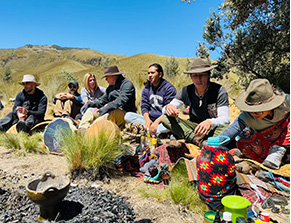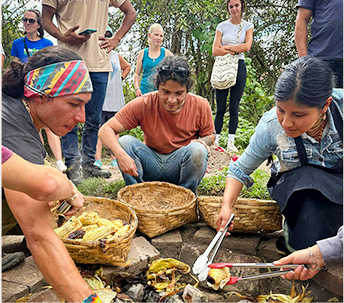
April Awakening: Your Body Is Speaking—Are You Listening?
April has arrived, and with it comes the energy of
Are you ready to embark on a transformative journey that extends beyond traditional plant medicine experiences? Join us for an eight-day all-inclusive (excluding airfare) retreat in the breathtaking Andes Mountains of Ecuador. This immersive experience offers not only access to authentic plant medicines:
but also a unique opportunity to connect deeply with a harmonious community dedicated to spiritual growth and emotional healing.

Under the guidance of experienced Amazonian healers, you will explore profound dimensions of self through ancient rituals and the nurturing power of nature. This is more than a retreat, it’s a doorway to personal awakening and healing, where every element is aligned to support your journey to wholeness.
Don’t miss this chance to transform your life. Your path to healing and self-discovery awaits—step into this sacred space and
embrace the power of unity and tradition.




Please note that there is a $1000 non-refundable deposit for the Healing Tours. The trip is non-refundable unless we can find a replacement for your spot. If you need to cancel more than 60 days before the retreat, you will receive a full refund of the remaining balance (excluding the deposit). For cancellations made between 30 and 59 days before the retreat, 40% of the remaining balance will be refunded. No refunds will be issued for cancellations made less than 30 days before the retreat unless a replacement is found for your spot.
*Some details are subject to change due to weather or group needs
Click on the dots to see full details
ACTIVITIES
ACTIVITIES
ACTIVITIES
ACTIVITIES
ACTIVITIES
ACTIVITIES
ACTIVITIES
This journey is designed for those seeking healing, clarity, and alignment with their true essence.
Ready to embark on your healing journey?
Visit www.hautehealingtours.com to reserve your space.




20 years of Healing Training

Nearly 7 decades of Healing others with plant medicines & ceremony

25 years of recognized Amazonian plant medicine therapeutics and healing

Facilitator, Guide & Translator

Nearly 7 decades of Healing others with plant medicines & ceremony

Facilitator & Guide

Facilitator & Guide

Facilitator & Guide

Facilitator & Guide
We work with some of the most respected andpowerful healers (Taitas) from the Kichwa tribe. They are highly experienced, gentle, caring, and deeply dedicated to healing and embodying the wisdom and sincerity of their people. The healing traditions of the Kichwa people offer an ancient path to well-being, re-discovering our true nature and re-awakening to our true purpose.


“Unlock the power of nature—heal, transform, and awaken your true potential with plant medicine”




April has arrived, and with it comes the energy of

At Haute Healing Oasis, we often remind our clients: Your

April is the month when nature reminds us what rebirth
